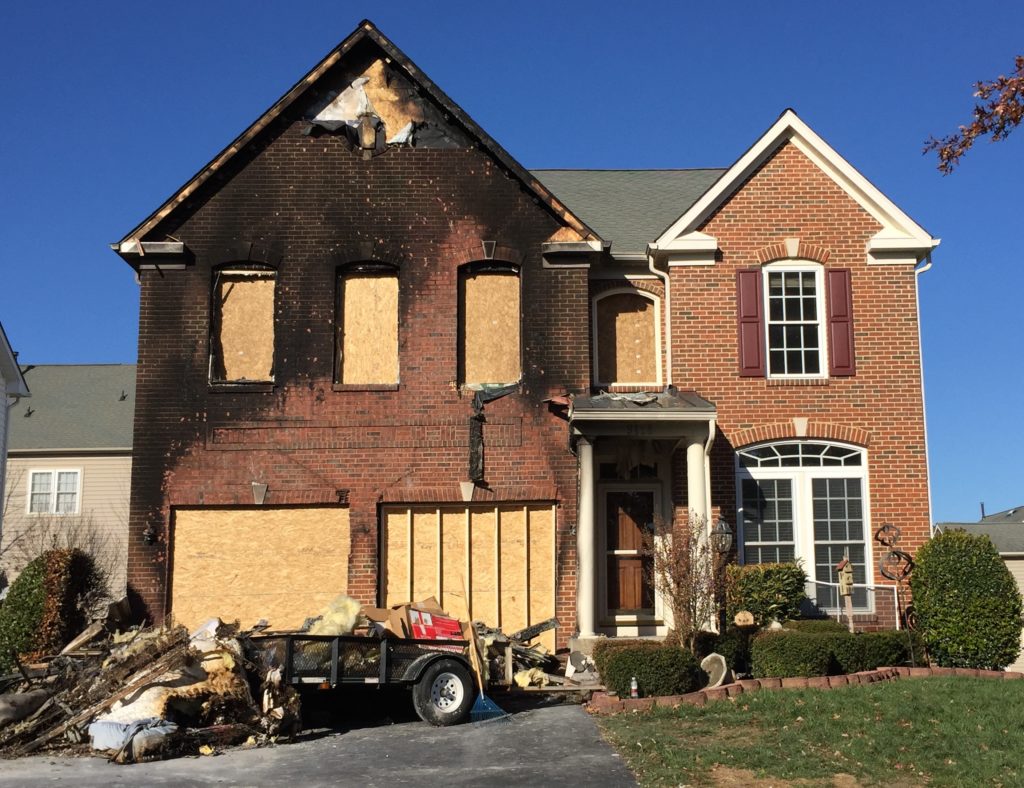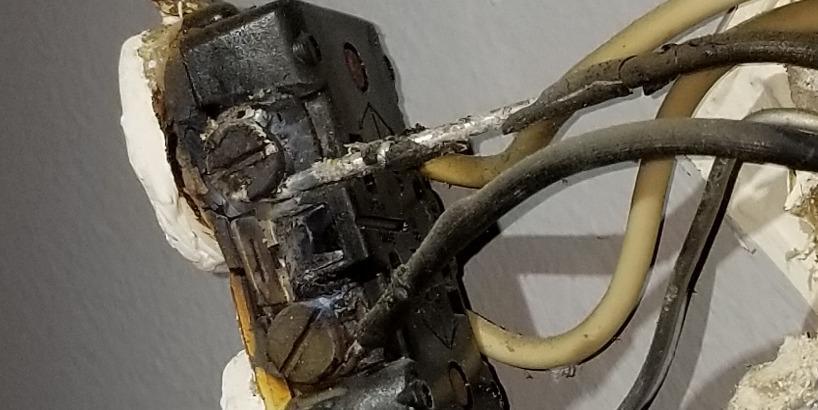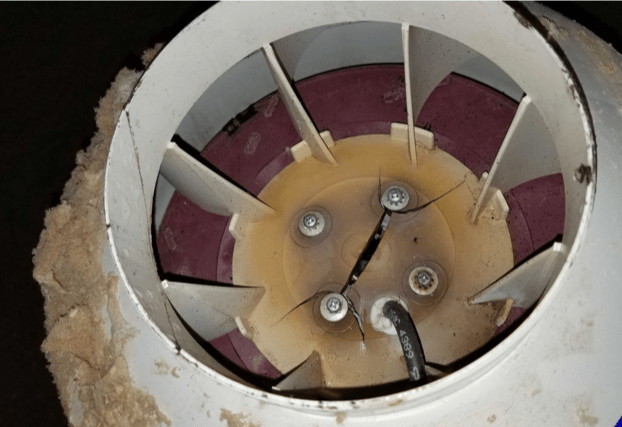Homeowners, home service contractors, and the insurance industry have taken notice. Ting works – and works well. We’re pleased to provide an important update on Ting, with additional information we hope will be meaningful for you, your family, and your home.
No one said this would be easy
“This was a tough problem. Really tough.”
Bob Marshall, CEO and co-founder, Whisker Labs
We set out on our journey 3 years ago with ample resolve and determination, especially considering the goal: eradicating the worst type of home fires. In contrast, when setting out to develop groundbreaking technology that challenges conventional thinking, one is bound to encounter resistance and doubt. This is especially true in the scientific and technology communities – but naturally expected.
We knew from the outset that our goal to develop a really smart sensor that watches over the entire home AND that simply plugs in was understandably audacious. It had to work – and work well.
“This was a tough problem. Really tough.” Says Bob Marshall, CEO and co-founder of Whisker Labs. Fortunately, as described in Ting’s origin story, we possessed both the motivation and the skills to take a solid swing at the problem.
Fast forward to today.
Ting has been probed, poked, and put through its paces. The insurance industry, in particular, took the lead early on; significant hard data and scientific evidence would be needed. If Ting could not reduce risk and support better outcomes for customers, what more would there be to talk about?
With thousands of homes and families protected by Ting, all expectations have been exceeded.
We’re proud to share that Ting’s ability to improve homeowner safety and peace of mind in part led to State Farm Ventures’ recent investment in Whisker Labs to help accelerate Ting’s growth and distribution.
We have been working with Whisker Labs for the past three years and have witnessed first-hand the evolution of Ting. We have been impressed with the team and product and look forward to continuing our work together.
November 2019
Michael Remmes, Vice President of State Farm Ventures
To put all of this in context, what follows is a 2-3 minute read that briefly touches on the following:
- The significance of Ting against the backdrop of electricity ‘history’
- Why it makes sense to reframe conventional thinking about electricity
- Putting risks into context: water leaks vs. ‘electrical leaks’
- The full scope of monitoring: it’s not just what’s behind your walls
- What’s next
A modern-day breakthrough…
…for 130-year-old life-changing technology. Ting’s intelligent sensor sheds light on what has been mainly in the dark (excuse the pun) since the broad distribution of electricity began in the late 19th century – namely – what is really happening in fine detail across your home’s electrical system.

While fundamentally very different from Ting, the closest comparison for mainstream electrical fire safety is the Arc-Fault Circuit Interrupter (AFCI) breaker, incorporated into the U.S. electrical code in 2010. AFCI breakers are required on about 50% of all circuit breakers in new homes. If your home was built after 2010, you are likely familiar with them. They are required with any renovation work for key areas of the home.
Because Ting ‘sees’ faults earlier in their formation across the entire home, it is suitable and cost-effective to install in all homes regardless of age or size. Ting covers the whole house no matter where it is plugged in.
Changing the way we think about electricity
Electrical fires are the most devastating fires to impact homes and families; on average, 50,000 homes a year are affected. One Ting plugged into any outlet in the home detects loose connections, damaged wires, or faulty appliances that are often the root cause of these horrible fires.
Your electrical infrastructure – hidden mainly behind walls and between floors – is not immune to father time
Regardless of your home’s age, have you ever wondered if the electrical system is genuinely healthy? Both seen and unseen elements? Your electrical infrastructure – hidden mainly behind walls and between floors – is not immune to father time: deterioration of outlets and conductor insulation; prior water damage or lightning damage; weather or pest infiltration; poor workmanship during building, renovation or device replacement; or merely bad luck in the form of wire caps loosening, nicks in insulation or general electrical malfunctions.
Ting monitors all of this, including things connected to your electrical system. And similar to a security camera, motion sensor, video doorbell, or smoke detector, Ting is a long-term smart solution for safety and peace of mind; there is little sense in dismissing it simply because no hazards or threats have been detected – yet.
Much worse than a water leak
Aging structures, widespread growth in connected devices, and access to electricity by 6.2B people have made electrical fire prevention a rising global concern.
All of us share a substantial reliance on water and electricity. However, we’re generally not installing more sinks, bathtubs, or hose bibs. In contrast, there are many more ‘access points’ for electricity in the home, and we’re increasingly plugging more and more devices into our home’s electrical system. Moreover, water leaks present less of a danger than ‘electrical leaks’, (in less technical forms, these are known as scintillations in tinier form, and arcs at larger magnitudes).
Aging structures, widespread growth in connected devices, and access to electricity by 6.2B people have made electrical fire prevention a rising global concern. Of the 80+ million homes in the U.S., over 50% are older than 40 years. It is not hard to conclude that older homes can present a higher risk of electrical faults that lead to fires. Clearly, risk levels are impacted by several factors, including how much care and attention prior owners afforded your home.
Importantly, younger homes are not without risk. In November, a 13-year-old house not too far from our headquarters experienced a horrible fire around 5 am caused by an electrical fault, leading to $120,000 in damage.

The family had just moved in a week before the fire. Thankfully both the family and first responders were reported to be without injury.
Worth mentioning, we’ve all likely had – and will have – more than a few projects in the home that involve your electrical system. Please always consider using a licensed professional for any electrical work, even if you consider yourself handy. Not convinced? Tim Carter (AsktheBuilder.com) presents a great perspective on this subject in his recent article in the Washington Post.
Ting sees beyond ‘inside the walls’
Ting’s performance has far exceeded expectations, preventing residential electrical fires without a single false alarm across thousands of homes.

In fact, Ting has identified faults that often pose severe fire risks in appliances or devices that we don’t often think about, such as sump pumps and radon pumps.
Statistically speaking, not every device/appliance fault Ting discovers would lead to a fire, but why take on that risk? More importantly, the faults discovered by Ting in these devices were the result of electrical or mechanical malfunctions in the device – and essentially ‘silent’ failures that did not trip a breaker nor provide any outward signals of a malfunction. Non-working sump pumps can easily lead to basement or crawl space flooding, and failing radon pumps can…well, you get the picture.

Finally, while on the job protecting your home, Ting also provides meaningful engagement and information on conditions and events of high relevance, such as power outages, weather warnings, and even notifications that their air conditioning or other essential appliances may be about to fail.
What’s next?
Be assured that our primary focus continues to be on electrical fire prevention. We’re excited to continue our mission of protecting families and homes from electrical fires.
Yet, Ting’s ability to sense tiny but important signals amongst less essential signals (what is referred to as ‘noise’) holds promise for Ting as a broader “fitness tracker for the home.” In fact, the Ting sensor platform has evolved well beyond fire prevention, with the potential to detect faults from anything connected to a home’s electrical network.
Further, we have recently demonstrated that a community of Ting-protected homes can help monitor the electrical utility grid with unparalleled precision. Ting is detecting faults on the grid outside the home that sometimes lead to devasting wildfires like those experienced in California. No one technology or solution can do it all. However, we firmly believe as adoption continues, Ting will help to serve homeowners, businesses, and the broader community at large. Stay tuned!
SPECIAL NOTE: As you are aware, electrical fires are not the only type of home fire. Whether you’ve built new or have bought an existing home, we’re hoping you have a fire safety plan. If you do, bravo! If you don’t have a plan or you know someone who may need one, here’s a good place to start.
Be safe!
